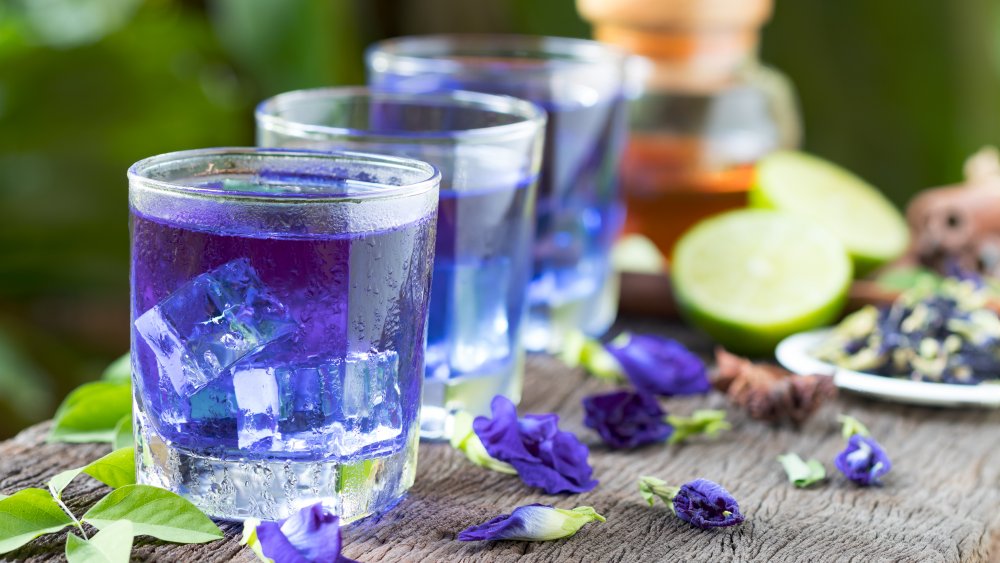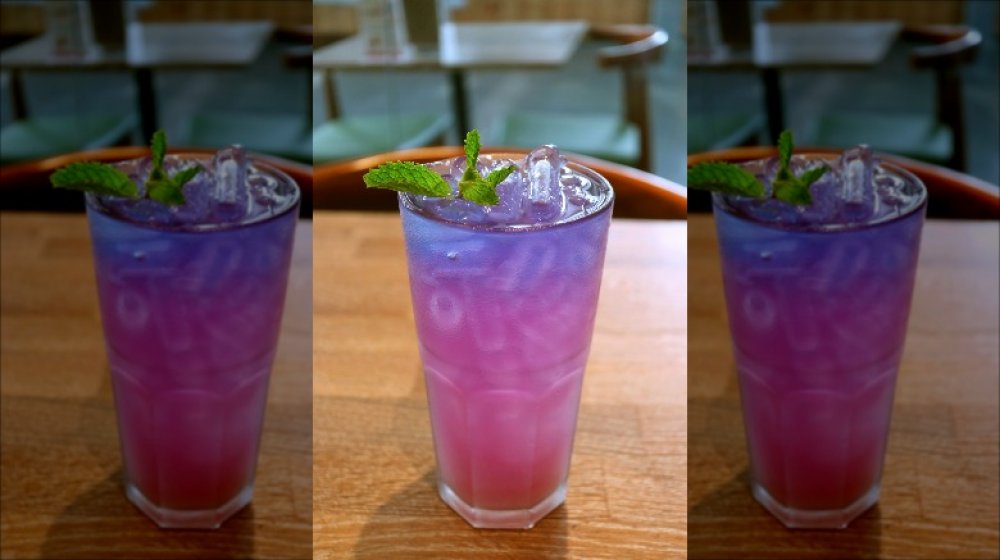The Truth About Butterfly Pea Flower
The butterfly pea flower may be known for its brilliant blue color, but it isn't just another pretty floral face. The plant is commonly found in Southeast Asia, and its distinctive blossoms are not only brewed and consumed as a floral tea, but are also said to have medicinal value, and are used as a natural dye (via Green Blender).
Tea made with butterfly pea flower is usually sold as dried buds and stems, or as powders, extracts, and tea bags. Butterfly pea flower tea has become something of a social media food star, thanks to its vivid blue color and because that blue can and does change color, depending on the pH level of whatever it is you add into the liquid. So it's perfectly natural to see the bright indigo tea transform into a magenta-colored beverage when lemon, orange, or other citrus fruits are added into the mix. Thanks to its mighty morphin' color properties, this flower tea is a hit with bartenders and mixologists who have turned the blue belle into margaritas, martinis, and other mixed drinks (via U.S. News).
Butterfly pea flowers are said to be full of antioxidants
Because butterfly pea bushes grow in the wild, Thai women have even been known to use its extracts to cover their grays. Researchers also say the plant has the potential to become a natural food and drink coloring.
But, aside from its obviously brilliant color, the butterfly pea flower is said to boast nutritional benefits, too. Like green tea, the indigo-hued tea is said to be full of antioxidants that does everything from improve skin and hair quality, boost brain functions, and act as an anti-inflammatory and an analgesic (via Majestic Herbs). But scientists warn against believing the hype around the butterfly pea flower because as with a number superfoods these days, its health claims have yet to be verified as all of its positive attributes were observed either in laboratory or through animal studies. If you're considering the idea of giving your health a boost by consuming butterfly pea flower, you might be better off eating more colorful fruits and vegetables instead.

